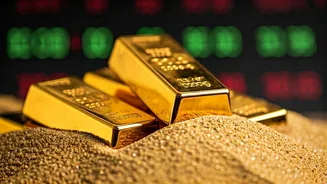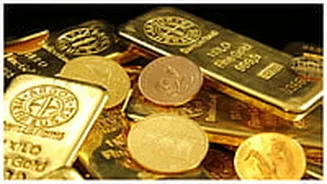The Recent Surge
Gold's value has increased, fueled by several factors. Economic uncertainty, including concerns about inflation and geopolitical tensions, often drives
investors toward gold as a secure investment. Increased demand from central banks, along with strong purchases from investors, has also supported the price increase. The weakening of the US dollar has further contributed, as gold is often priced in dollars. As the dollar becomes less expensive, gold becomes more attractive to investors holding other currencies. This confluence of elements has created a robust environment for gold, propelling its value higher.
Factors Driving Up
Multiple factors have contributed to the recent surge in gold prices. Economic anxieties about inflation are a major concern, prompting investors to seek gold as a hedge against rising costs. Geopolitical uncertainties, such as conflicts and political instability, also play a crucial role. Gold is often viewed as a safe-haven asset during times of uncertainty. Furthermore, significant purchases by central banks worldwide, adding to demand and further pushing up prices, have added to its value. The fluctuations of the US dollar also impact the gold market, with a weaker dollar making gold more affordable for international buyers, which consequently boosts demand and price.
Signs of Slowdown
While gold's recent performance has been impressive, there are indicators suggesting a potential slowdown. A stronger US dollar could make gold more expensive for holders of other currencies, reducing demand. Rising interest rates could also make alternative investments, like bonds, more attractive. As interest rates increase, the opportunity cost of holding gold, which doesn't provide interest, becomes higher. Furthermore, the overall economic outlook and investor sentiment play a critical role. If economic indicators improve and risk aversion decreases, investors may shift their funds from gold to other assets, possibly affecting its value.
Market Analysis
A closer look at the market reveals additional insights. Some analysts point to overbought conditions, indicating that the price may have risen too quickly, suggesting a possible correction. Technical indicators, such as the Relative Strength Index (RSI), can help determine if an asset is overbought or oversold. Increased supply of gold from mining activities might contribute to a price correction. Changes in investor behavior and shifts in demand, like those observed in other commodity markets, could also influence gold's trajectory. These factors, taken together, suggest a need for caution and careful monitoring of market trends.
Indian Investor's View
For Indian investors, understanding the gold market is crucial. Traditionally, gold is considered a valuable asset, especially during festivals and weddings. However, investors need to assess their risk tolerance and investment goals. Diversifying a portfolio with different asset classes, including gold, can balance risk and potentially enhance returns. It is also important to consider the tax implications of gold investments. Consulting a financial advisor can provide customized guidance based on individual financial circumstances. Investors should stay informed about market developments and make informed decisions to optimize their investments.















